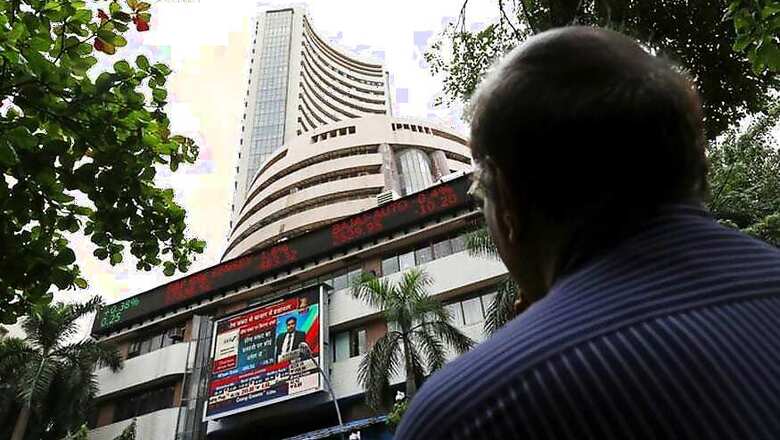
views
Mumbai: Domestic equity indices BSE Sensex and NSE Nifty plummeted nearly 770 points and 225 points respectively on Tuesday after India's economic growth dropped to over the six-year low of 5%. The slump in the market came after panic sell-offs across the board as investors fretted over the deepening economic crisis and a global trade tussle.
Massive selloffs in equities saw investor wealth eroding by Rs 2.55 lakh crore.
A slew of recent macroeconomic data on the Gross Domestic Product (GDP), core sectors, and auto sales are pointing towards a deepening economic rout in the country.
Indian markets, after an extended weekend, opened on Tuesday sharply lower reacting to the country's worsening macro-economic situation as well as weak global cues attributed to long-lasting US-China trade tiff. After nosediving 867 points during the day, the 30-share index ended 769.88 points, or 2.06%, lower at 36,562.91. The broader Nifty also sank 225.35 points, or 2.04%, to settle at 10,797.90.
Top losers in the Sensex included ICICI Bank, Tata Steel, Vedanta, HDFC IndusInd Bank, Tata Motors, RIL and ONGC — falling up to 4.45%. Only two IT stocks — TechM and HCL Tech — ended with mild gains, tracking weaker rupee. The rupee plunged 90 paise (intra-day) to trade at 72.27 per US dollar.
Public sector bank stocks, led by Corporation Bank and Punjab National Bank, tumbled up to 9.3% percent (intra-day) after the government on Friday announced the merger of 10 state-run lenders into four.
All sectoral indices ended in the red, with BSE metal, energy, consumer durables, telecom, bankex, finance, oil and gas, realty and capital goods indices settled 3.23% lower. Broader BSE midcap and smallcap indices too closed up to 1.65% lower.
"The sharp fall in the Q1 GDP growth to 5% and the weak core sector growth are the key factors that have caused a fall in the markets as it opened after a long weekend. The continuing negative global cues, the raging tariff war between the US and China, and the likely sluggishness in the economic fortunes of economies around the world have also been behind the rot in the markets here as well as elsewhere," said Joseph Thomas, Head of Research at Emkay Wealth Management.
Weak domestic consumption, especially in rural areas, has resulted mainly from low employment levels and non-availability of finance, which are issues that call for immediate measures to salvage the situation, Thomas said.
Public sector bank stocks also ended in significantly lower after the government announced the merger of 10 state-run lenders into four. It gives a positive signal to investors that the government is not just focusing on recapitalising the bank, but also in improving the governance in the public sector banks, experts said.
However, the merger will still be painful as a result of the geographic and cultural diversity of the merging entities, they added.
Despite several efforts by the government to boost the economy, market sentiment took a hit on account of weak macroeconomic data releases and double-digit decline in auto sales in August as the sector continued to reel under one of the worst slowdowns in its history.
Official data released after market hours on Friday showed that India's GDP growth slipped to an over six-year low of 5% in the June quarter of 2019-20, hit by a sharp deceleration in manufacturing output and subdued farm sector activity.
Additionally, the country's manufacturing sector activity declined to its 15-month low in August, owing to slower increases in sales, output and employment, the IHS Markit India Manufacturing Purchasing Managers' Index showed.
Growth of eight core industries also dropped to 2.1% in July, mainly due to contraction in coal, crude oil and natural gas production, according to a government data released on Monday.
(With inputs from PTI)


















Comments
0 comment